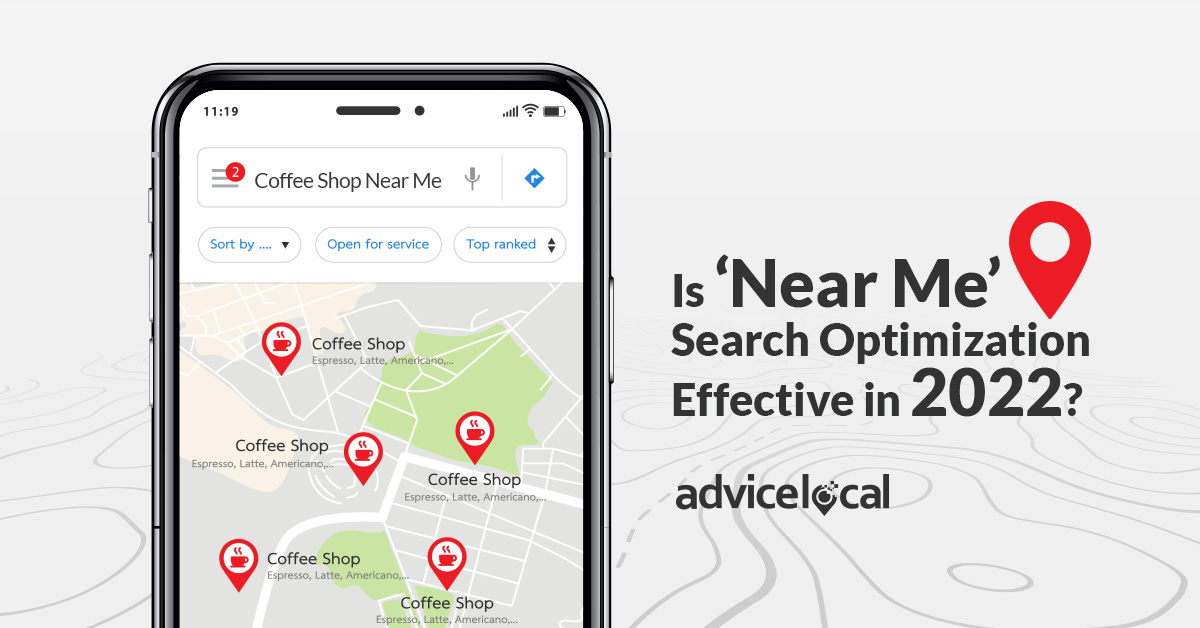Last week was a chance to recap all the biggest announcements you may have missed from Google I/O 2022. This week we’re switching focus to some important news on “near me” search optimization – information that could impact your SEO strategies going forward.
Google’s Response to the Rise of ‘Near Me’ Search Optimization
Over at Search Engine Land, Chris Silver Smith shares his research on brands that have “near me” added in their business name, and whether or not they actually rank higher in the local pack and/or Google Maps.
As you know, Google has been working hard to reduce the amount of Google Business Profile spam. The research Chris presents shows that businesses with “near me” added in their name do not rank higher on maps or in the local pack.
However, there’s a lot more Google Business Profile (GBP) spam to be taken care of. Remember when Google rolled out the Vicinity update at the end of last year? While this update certainly helped reduce GBP spam, it also affected businesses that weren’t actually spamming their business name.
This is one reason why relevance, proximity and prominence are so important. We have discussed these elements before, including just what they mean for a business’ chances of reaching the local pack. As you know, Google prioritizes profiles that meet all three criteria. However, when there are not enough of these profiles for a search term, positive sentiment and reviews can be the overriding factor.
So How Can You Help the Businesses That Are Suffering as a Result of These Google Updates?
1. A well-optimized and maintained Google Business Profile will separate a business from most competitors.
A GBP should include a keyword-rich description, categories, accurate contact information, high-quality images – and up-to-date product and services information. And don’t forget a consistent flow of new and positive reviews!
2. Accurate business listings can help secure multiple Google search listings for single keywords.
Remember to prioritize accuracy across GBP, a business website, social platforms and directory listings to avoid any bad data inconsistencies.
3. Ensure a website (including the location pages) contains the most relevant information.
Website location pages should include a map, Local Business schema, the address, business hours, phone number and other features that help Google determine relevance. This helps Google understand what products/services the business offers in relation to a specific geographic area.
4. Audit the business’ local presence quarterly (at minimum).
Look to audit local presence on GBP, Bing, Yelp, social media, directory platforms and anywhere else that can deliver targeted traffic. A local presence audit should look at contact information accuracy, business descriptions, the presence of Google EAT and other key factors.
As we’ve seen with these recent algorithm updates, it’s hard to predict exactly what Google will prioritize. A local business strategy focused on “near me” searches can still be used on the business’ website as an effective approach for organic placement, but not in maps or the local pack. As always, staying informed and nimble will ensure your clients can stay ahead with every Google update.
Advice Local Provides the Tools You Need
Whether it is access to the latest local marketing news, online visibility reports, business listing management, our Google Authority Score tool or a complete dashboard solution, Advice Local has you covered. To see for yourself, request a demo or call (214) 310-1356 today.




![Advice Locator Map [ad]](https://www.advicelocal.com/images/Locator-Map.png)